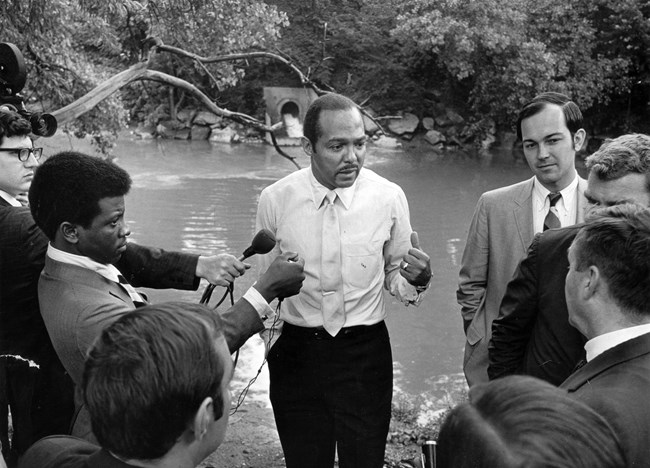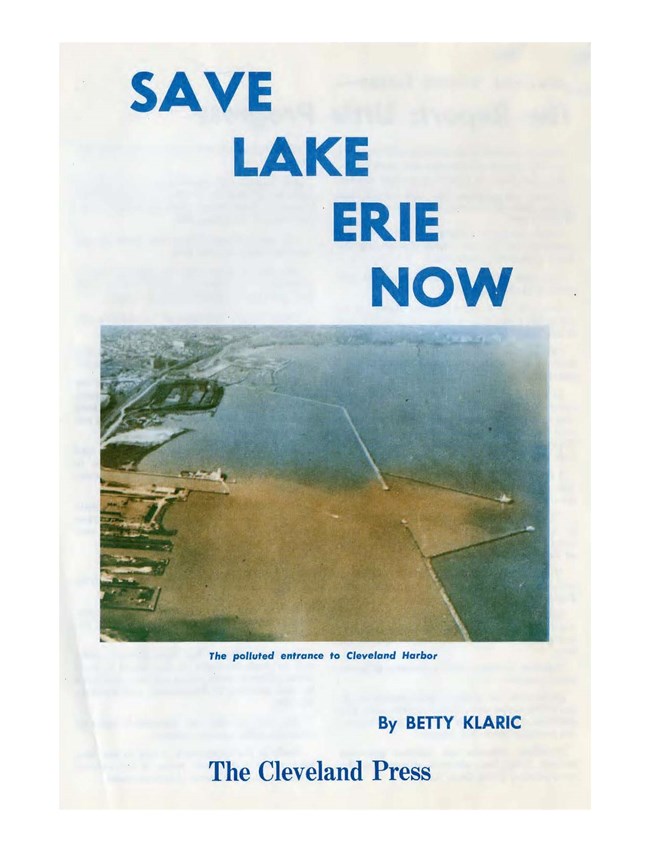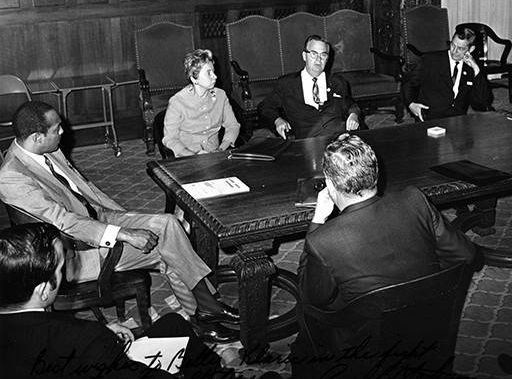Last updated: December 20, 2023
Article
Carl B. Stokes and the 1969 River Fire

The City of Cleveland
On June 22, 1969, the Cuyahoga River caught on fire in Cleveland, Ohio, just a few miles downstream of Cuyahoga Valley National Park. Within months, this event grew from a local story about property damage to an international symbol of water pollution. The person most responsible for turning a modest fire into an icon of the environmental movement was Cleveland’s mayor, Carl B. Stokes. Yet, Stokes did not see himself as an environmentalist. The definition felt too narrow. His concerns were closer to what we now call environmental justice.
The Pollution Tour
When the fire happened, Stokes was a national figure. Two years before, he became the first African American elected mayor of a major US city. He used his savvy with the media and this national spotlight to draw attention to the needs of what he called the “urban environment.” These included poor housing and poverty. The fire took place on a Sunday. On Monday, Stokes led local press on a tour of the river. They visited the location of the fire, an industrial site, and sewers that contributed to pollution.
David and Richard Stradling describe this in their 2015 book called, Where the River Burned: Carl Stokes and the Struggle to Save Cleveland. They wrote, “During the pollution tour, Stokes attempted to assign meaning to the fire. He argued that the city was not in a position to control the pollution within its borders…Cleveland had no power over its suburbs…And it had no control over state regulations and the pollution permit system.”

Cleveland State University/The Betty Klaric Collection
The second hero of this story was Betty Klaric, one of the nation’s first fulltime environmental reporters. A key voice in the Save Lake Erie campaign, she covered the tour for the Cleveland Press. National magazines picked up her reporting. An August 1969 Time article featured Stokes and described the Cuyahoga as the river that “oozes rather than flows.” National Geographic included a fold-out image of the oily Cuyahoga River in the December 1970 issue dedicated to the “ecological crisis.”

Cleveland State University/The Betty Klaric Collection
Moving Beyond Local Action
Before the fire, Stokes had focused on local actions to improve water quality. In 1968, Cleveland voters passed a $100 million bond issue for sewer upgrades. On the press tour, he argued that this would not be enough. The river flowed through too many places before reaching Cleveland that were outside his control.
After the fire, Stokes gained tools to improve the city. In 1970 he testified before the US Senate on behalf of the US Conference of Mayors. He called for significant federal funding for clean water. The same year Congressman Louis Stokes, the mayor’s brother, testified in the US House, securing money for Cuyahoga River clean up. The Northeast Ohio Regional Sewer District and the Ohio Environmental Protection Agency formed in 1972. The city and suburbs now had a shared sewer system. The regulatory process developed. The federal Clean Water Act from 1972 provided stronger mandates for pollution control.
Ahead of His Time
One change did not happen. The environmental movement of the time stayed focused on air and water pollution. It did not broaden to encompass the other issues of the “urban environment” that Stokes prioritized. He voiced this concern at a press event for the first Earth Day in 1970. He said, “I am fearful that the priorities on air and water pollution may be at the expense of what the priorities of the country ought to be: proper housing, adequate food and clothing.”
Stokes was ahead of his time. By the 1980s, the environmental justice movement helped broaden environmentalism. It focuses on how poor environmental conditions affect low-income and minority communities more than others. Part of Stokes’ legacy is a reminder to think about how we address issues to benefit us all.
Learn More
On the 50 year anniversary of the 1969 fire, Ideastream Public Media did a story revisiting the Pollution Tour sites and explaining why Stokes picked them. See then and now photos of the Big Creek Interceptor, the burned railroad bridge now on ArcelorMittal property, the former Harshaw Chemical Company site, and a sewer pouring waste from Cuyahoga Heights into the river.
